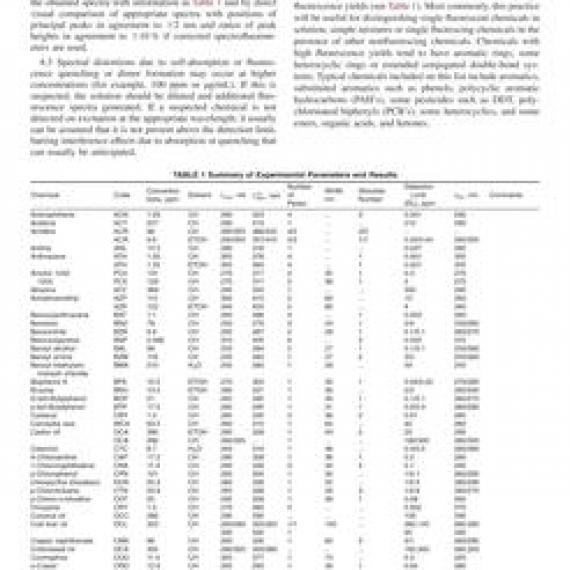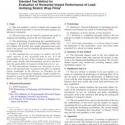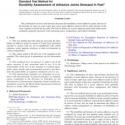No products
ASTM D4763-06(2020)
ASTM D4763-06(2020) Standard Practice for Identification of Chemicals in Water by Fluorescence Spectroscopy
standard by ASTM International, 12/15/2020
Full Description
1.1''This practice allows for the identification of 90 chemicals that may be found in water or in surface layers on water. This practice is based on the use of room-temperature fluorescence spectra taken from lists developed by the U.S. Environmental Protection Agency and the U.S. Coast Guard (1). Ref (1) is the primary source for these spectra. This practice is also based on the assumption that such chemicals are either present in aqueous solution or are extracted from water into an appropriate solvent.2
1.2''Although many organic chemicals containing aromatic rings, heterocyclic rings, or extended conjugated double-bond systems have appreciable quantum yields of fluorescence, this practice is designed only for the specific compounds listed. If present in complex mixtures, preseparation by high-performance liquid chromatography (HPLC), column chromatography, or thin-layer chromatography (TLC) would probably be required.
1.3''If used with HPLC, this practice could be used for the identification of fluorescence spectra generated by optical multichannel analyzers (OMA) or diode-array detectors.
1.4''For simple mixtures, or in the presence of other nonfluorescing chemicals, separatory techniques might not be required. The excitation and emission maximum wavelengths listed in this practice could be used with standard fluorescence techniques (see Refs (2-6)) to quantitate these ninety chemicals once identification had been established. For such uses, generation of a calibration curve, to determine the linear range for use of fluorescence quantitation would be required for each chemical. Examination of solvent blanks to subtract or eliminate any fluorescence background would probably be required.
1.5''This standard does not purport to address all of the safety concerns, if any, associated with its use. It is the responsibility of the user of this standard to establish appropriate safety, health, and environmental practices and determine the applicability of regulatory limitations prior to use.
1.6''This international standard was developed in accordance with internationally recognized principles on standardization established in the Decision on Principles for the Development of International Standards, Guides and Recommendations issued by the World Trade Organization Technical Barriers to Trade (TBT) Committee.


































